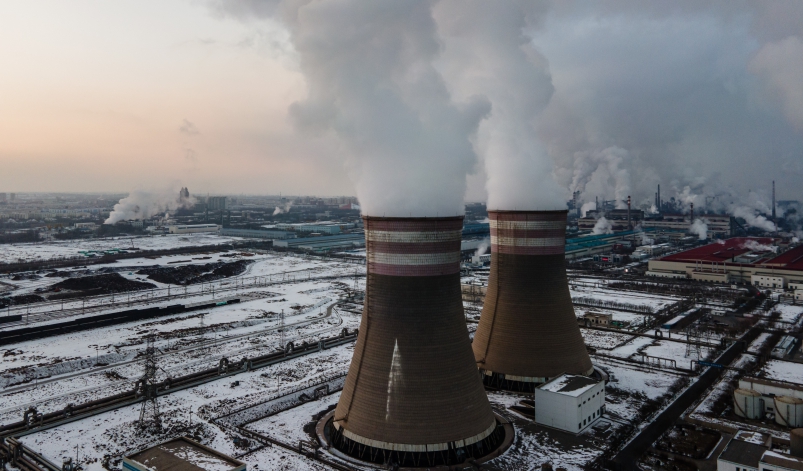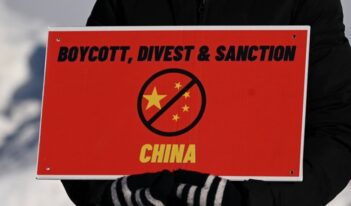
Research comparing risk regulation in the United States and China reveals selective variations, not sharp contrasts.
The stringency of environmental risk regulations has ramifications for both the environment and the economy. Differences in regulatory stringency across countries may be associated with differences in domestic health, environmental, and economic outcomes, and may also lead to international trade conflicts, shift the flow of foreign direct investment, and foster pollution havens or leakage to countries with less stringent environmental standards.
The conventional view has long been that some countries have systematically more stringent environmental risk regulations than others, such as Europe versus the United States or industrialized countries versus developing countries. But these conventional generalizations of national regulatory comparisons may have been drawn too hastily. Detailed empirical research in recent decades has shown that the reality is more complex.
Research comparing patterns of risk regulation in Europe and the United States, for example, has revealed an overall average parity in the stringency of risk regulation on both sides of the Atlantic, with divergences reflecting greater European stringency on some risks and greater U.S. stringency on others. This research has also shown policy variation across different risks within the EU and within the United States as well.
In our newest research, we compared risk regulation in China and the United States, and we have also found a more complex pattern that does not support the longstanding conventional view of U.S. regulation being much more stringent than in China. Working with Huanhong Li, a doctoral student at Peking University, we compared the regulatory stringency of the written rules for a random sample of 45 environmental risks between the United States and China as of January 2017. We scored the relative stringency of the regulation of each risk and found that even though overall environmental risk regulation is somewhat more stringent in the United States, the difference is much smaller than the conventional impression would suggest. Using a scale in which “0” indicated equivalent stringency between the two countries and positive scores indicated greater stringency in the United States, we estimated an overall score of only 0.06 for the 45 environmental risks in our sample.
We also found that neither the United States nor China dominated relative regulatory stringency. Instead, each country regulated some risks more stringently than the other. Among the 45 environmental risks in our sample, the United States had more stringent regulations on 27 risks, China on 13 risks, and the United States and China were on par in regulatory stringency on five risks.
We also examined the risks that may have international trade implications under World Trade Organization rules and found that, among the 45 environmental risks in our sample, 41 have international trade implications, of which the United States regulated 25 more strictly than China, while China regulated 12 more strictly than the United States.
Looking at the 45 regulations in our sample on a sectoral basis, we found that the United States regulated the risks in the environmental, energy, manufacturing, and chemicals sectors more stringently, while China regulated the risks in the transportation and agricultural sectors more stringently.
Furthermore, even where one country regulates one risk more stringently, the other country may still regulate some aspects of that risk more strictly. For instance, although U.S. national ambient air quality standards are more stringent overall than China’s, the United States has less stringent standards for nitrogen dioxide emissions on the dimension of protecting public welfare. In other words, the pattern of complex particularity is repeated both across all the regulations in our sample and also within their specific elements. Among the 45 randomly selected environmental risks that we examined, 22 had conflicting evidence of internal variation in policy stringency.
Our findings cast doubt on the conventional view of unified national styles or general national stances in environmental risk regulation. The reality revealed by our more detailed studies appears to be a complex pattern of selective regulation of particular risks in each country. The associated variations in the outcomes of these policies, such as their effects on health, environment, economy, trade, and investment, need to be studied by examining specific evidence on particular risks and policies, not by relying on broad-brush national types or styles of regulation.
Assessments of the influence of environmental risk regulations on policy outcomes that rely on overall national composite scores to measure the stringency of environmental risk regulations might obscure nuanced differences in particular regulatory stringencies across countries and policies. As a result, they may generate misleading results.
The complex pattern we have observed in particular risk regulations within and across countries may arise from multiple factors: risk perceptions and crisis events, economic competition and trade protectionism, interest group politics, institutional differences, and transnational policy learning and emulation, among others.
Furthermore, these factors may vary across countries, institutions, risks, and time periods. For this reason, their influence on the formation of risk regulations may also vary. Variation in these factors across countries and the complexity of their joint influence on policymaking may inhibit or preclude the emergence of broad national stances on the stringency of risk regulation.
Our study of environmental risk regulations in China and the United States does have limitations. We compared the regulations in effect on one date, in January 2017. Further research could extend this analysis to test changes over a larger time span. We scored the written rules adopted in each country on each risk—that is, the law on the books—but this does not measure how subsequent implementation, monitoring, and enforcement of these standards—the law in action—may vary across countries and risks. And even though we assessed the regulation of 45 environmental risks, this could be broadened to compare risks in other domains, such as food, health, workplace, cyber, and homeland security risks.
Nevertheless, even within this sample of written environmental risk regulations at a single point in time, we found selective variation across particular risks rather than sharp contrasts in national stances.





